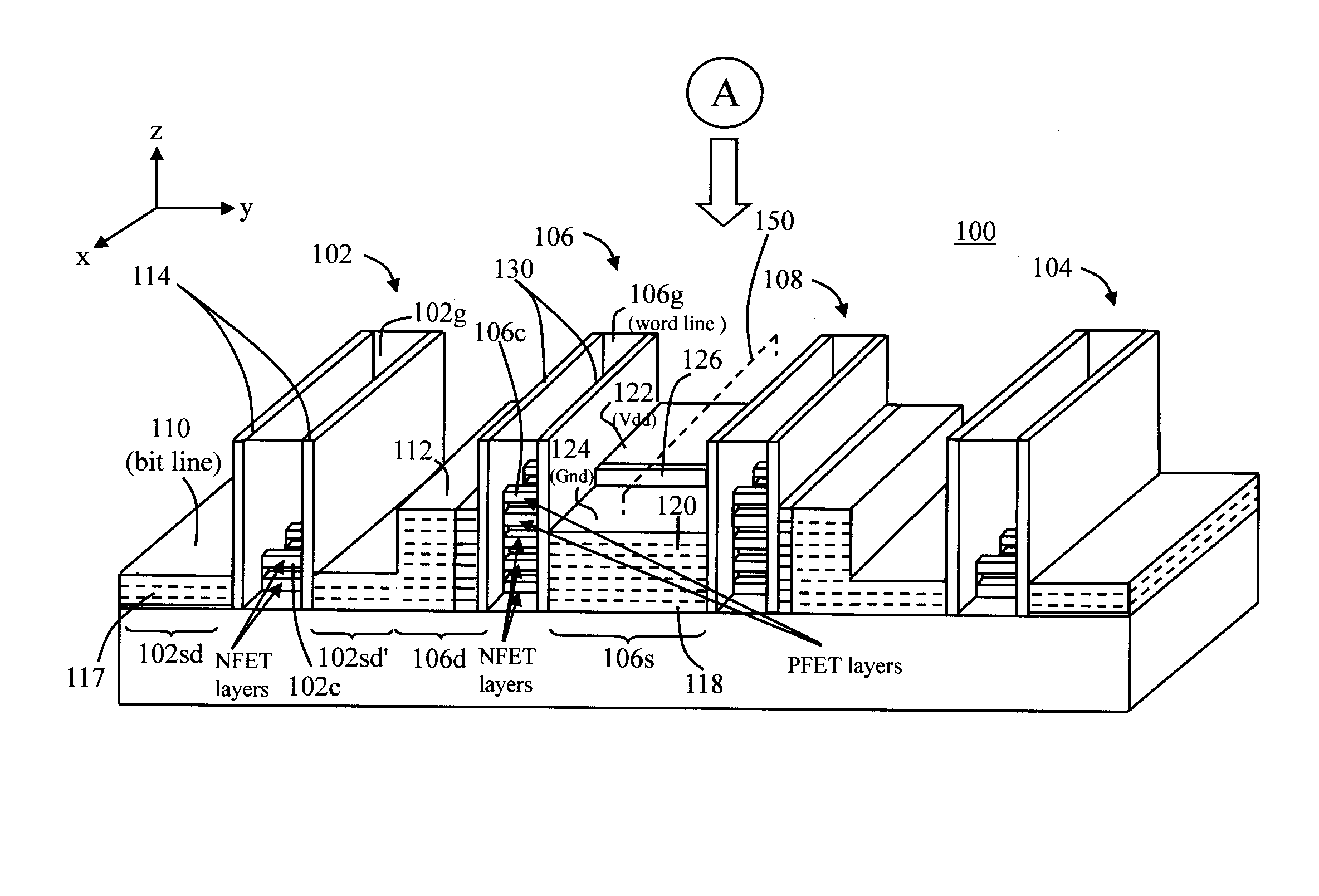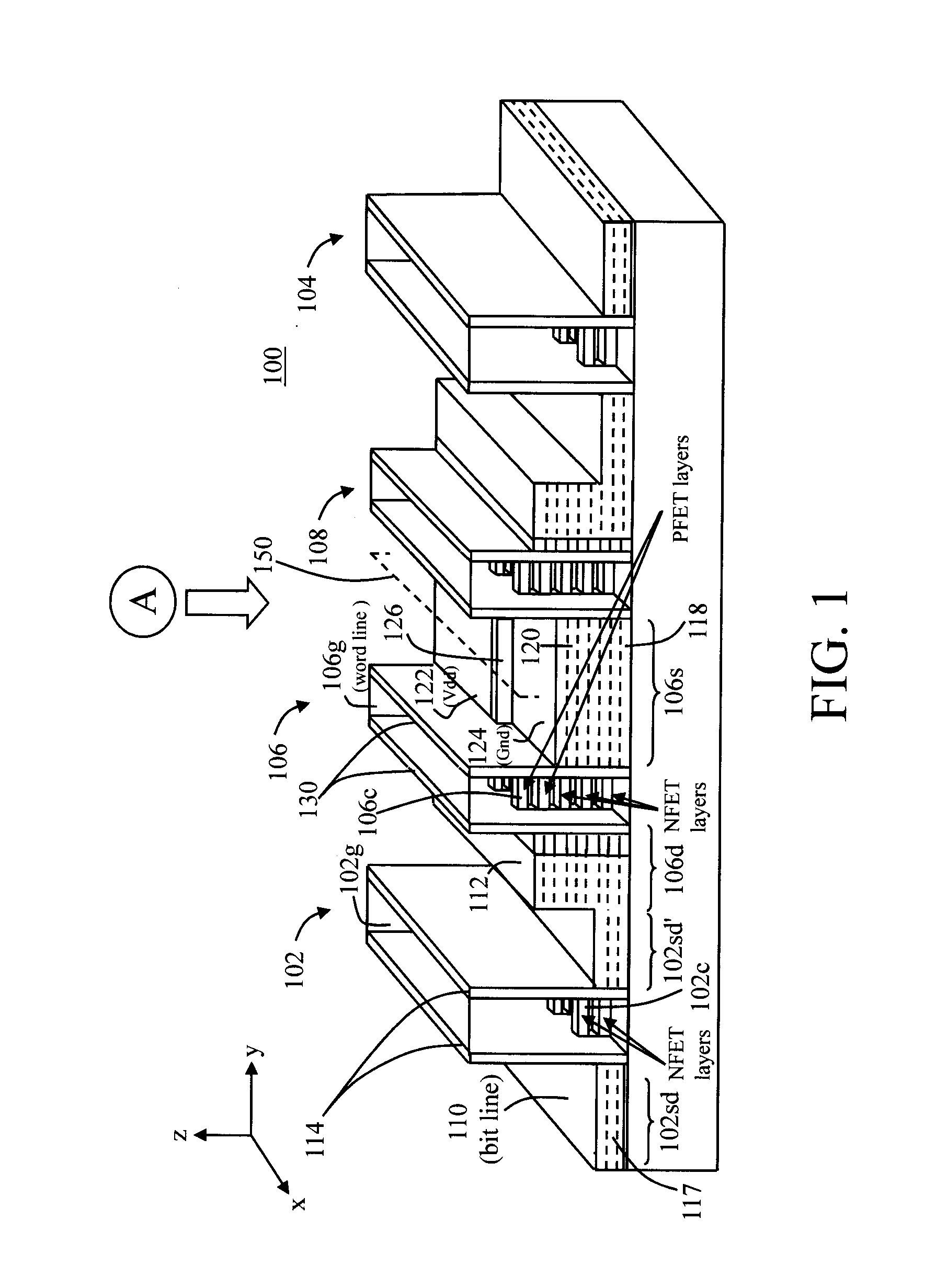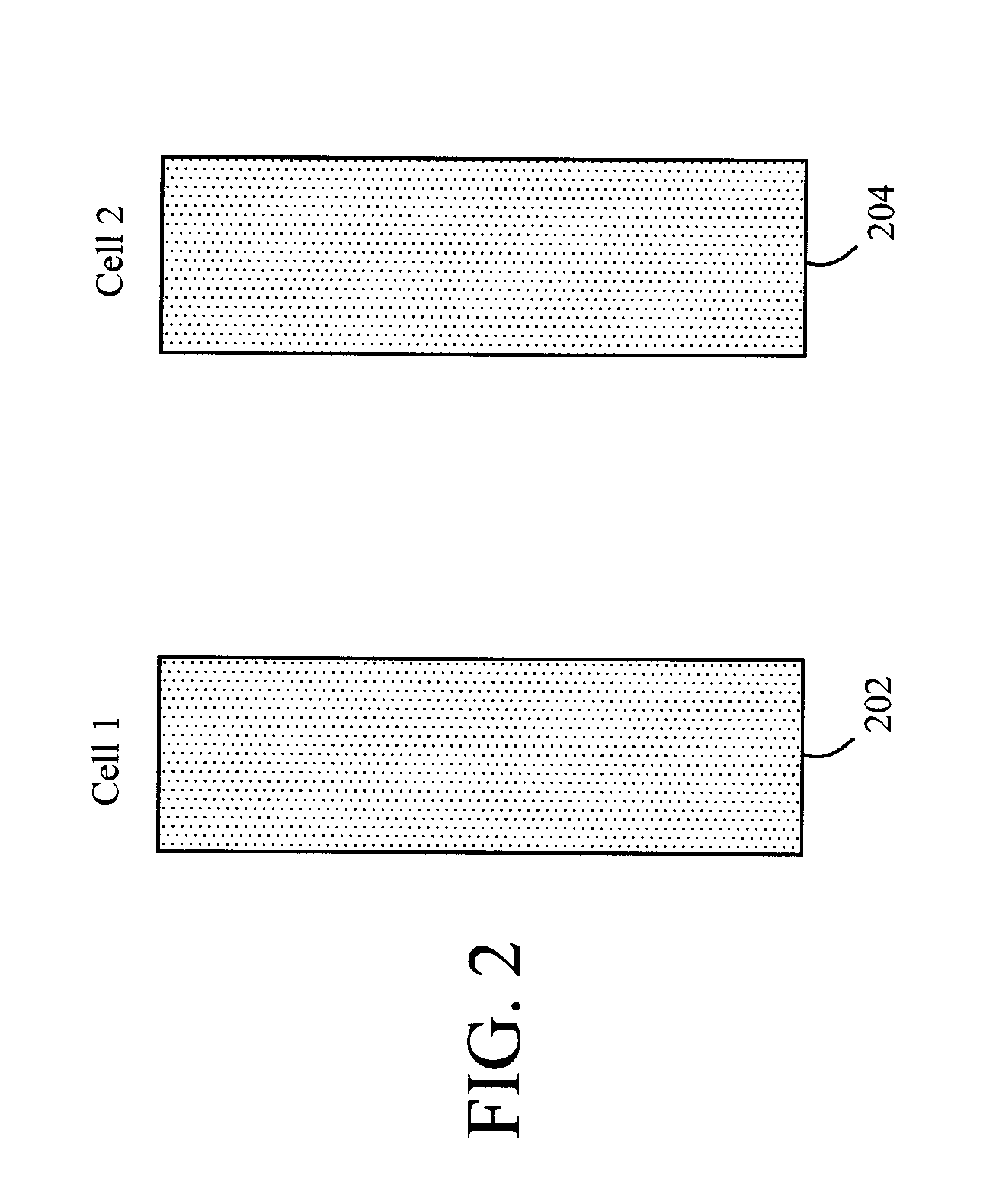Nanomesh SRAM Cell
a static random access memory and nanowire technology, applied in the field of nanowire-based static random access memory (sram) devices, can solve problems such as adversely affecting the performance of the completed devi
- Summary
- Abstract
- Description
- Claims
- Application Information
AI Technical Summary
Benefits of technology
Problems solved by technology
Method used
Image
Examples
Embodiment Construction
FIG. 1 is a three-dimensional cross-sectional diagram illustrating exemplary static random access memory (SRAM) cell 100. The configuration shown is a 6T SRAM cell containing six nanowire mesh-based field-effect transistors (FETs), configured as a pair of pass gates and a pair of inverters, e.g., with the pair of inverters located in between and separating the pair of pass gates. The depiction of a six transistor (6T) SRAM cell is merely to provide an example by which to illustrate the present teachings. Namely, other cell designs, such as 8T and 10T configurations may be similarly configured and would be within the scope of the present teachings.
The two pass gates, i.e., pass gates 102 and 104, each comprise one nanowire mesh-based transistor (an n-channel FET (NFET) transistor), and the two inverters, i.e., inverters 106 and 108, each comprise two nanowire mesh-based transistors (an NFET / p-channel FET (PFET) pair of transistors). According to the exemplary embodiment depicted in F...
PUM
 Login to View More
Login to View More Abstract
Description
Claims
Application Information
 Login to View More
Login to View More - R&D
- Intellectual Property
- Life Sciences
- Materials
- Tech Scout
- Unparalleled Data Quality
- Higher Quality Content
- 60% Fewer Hallucinations
Browse by: Latest US Patents, China's latest patents, Technical Efficacy Thesaurus, Application Domain, Technology Topic, Popular Technical Reports.
© 2025 PatSnap. All rights reserved.Legal|Privacy policy|Modern Slavery Act Transparency Statement|Sitemap|About US| Contact US: help@patsnap.com



